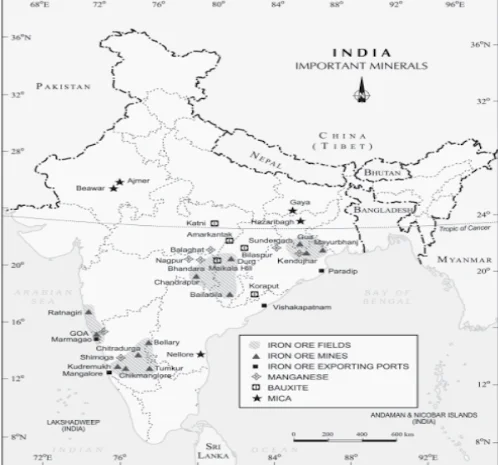![]() 12 Dec 2023
12 Dec 2023
India is fortunate to have fairly rich and varied mineral resources however unevenly distributed. Peninsular rocks, hosting Minerals in India, contain reserves of coal, metallic minerals, mica and many other non-metallic minerals. Sedimentary rocks on the western and eastern flanks of the peninsula, in Gujarat and Assam, off-shore-areas near Mumbai Coast (Mumbai High) have most of the petroleum deposits. The vast alluvial plains of north India are almost devoid of economic minerals.
These variations in the distribution of minerals in India exist largely because of the differences in the geological structure, processes and time involved in the formation of minerals.
Three Broad Belts: Minerals in India are generally concentrated in three broad belts. These belts are:

India Distribution of important Minerals

India – Metallic Minerals (Ferrous)
Conclusion
The abundance of minerals in India, spanning ferrous and non-ferrous resources, is a cornerstone of its economic landscape. The geographical distribution, reflecting diverse geological processes, underscores the nation’s mineral wealth, showcasing the vital role of minerals in India’s economic landscape. Strategic and sustainable management of these minerals in India is imperative for fostering economic growth while preserving environmental equilibrium.
Also Read: India’s Mineral Wealth: Distribution, Challenges, Conservation Strategies
<div class="new-fform">
</div>